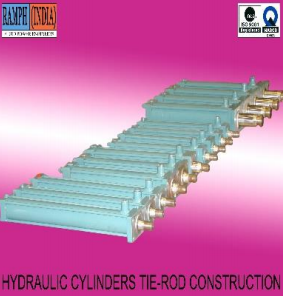Tie Rod Construction
Tie rods are essential components in various construction applications, primarily serving to stabilize structures and provide tensile strength. These rods, typically made of high-strength steel, are used to connect and reinforce different structural elements, preventing movement or collapse under load. In construction, tie rods are often employed in retaining walls, bridges, and buildings to resist lateral forces and ensure stability against environmental stresses such as wind, seismic activity, or soil pressure.
The construction of tie rods begins with careful design considerations. Engineers analyze the specific loads and forces that the structure will encounter, determining the required size, material properties, and configuration of the tie rods. The design process also includes the selection of appropriate anchorage systems, which are crucial for transferring the loads from the tie rods into the surrounding structures. This ensures that the rods function effectively to maintain structural integrity.
Manufacturing tie rods involves several steps, including cutting, threading, and surface treatment. The rods are often cut to precise lengths and then threaded at both ends to facilitate connection with other structural components. Surface treatments, such as galvanization or painting, are applied to enhance corrosion resistance, ensuring the longevity of the rods, especially in harsh environments.
Installation of tie rods is a critical phase in the construction process. Proper placement and alignment are vital to their effectiveness. Workers typically use tensioning devices to apply the required tension to the rods, ensuring they are secured and functioning as intended. This tensioning process not only enhances the load-bearing capacity of the rods but also contributes to the overall stability of the structure.
In retaining walls, tie rods are installed horizontally or diagonally, connecting the wall to the soil behind it. This configuration helps resist the lateral pressure exerted by the soil, preventing wall failure. In bridge construction, tie rods are used in truss systems, providing the necessary support to carry dynamic loads from traffic. Their role in stabilizing structures under various loads cannot be overstated.
Moreover, tie rods play a significant role in seismic design. In earthquake-prone areas, structures are often designed with additional tie rods to withstand the lateral forces generated during seismic events. These rods help distribute the forces evenly across the structure, reducing the risk of failure and ensuring the safety of occupants.
Regular inspection and maintenance of tie rods are essential to ensure their effectiveness over time. Engineers and construction professionals conduct periodic assessments to check for signs of wear, corrosion, or structural damage. If any issues are identified, timely repairs or replacements are crucial to maintain the safety and integrity of the overall structure.
In summary, tie rods are indispensable elements in modern construction, contributing to the stability and safety of various structures. Their careful design, manufacturing, and installation processes are vital to ensure they perform effectively under load. As construction techniques evolve, the use of tie rods will continue to play a significant role in enhancing structural resilience against a variety of forces, ensuring the longevity and safety of buildings and infrastructure.

